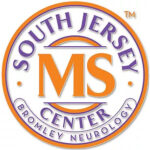
There are three categories of MS: relapsing-remitting, primary progressive and inactive. Those who have active MS will experience relapses and new lesions on their MRI scans. Those with PPMS are considered inactive, and do not experience relapses. The disability level in patients with active MS is generally stable or improving. But, this classification is contested. Below, you’ll learn more about the different types of MS and how to classify your disease.
Three main types of multiple sclerosis
MS is an autoimmune disease of the central nervous system (CNS), which is characterized by demyelination of the brain. Although the cause of multiple sclerosis remains unknown, environmental factors, Epstein Barr virus infection, and deficiencies in vitamin D are associated with the disease. In addition, parasites can trigger an unpredictable, persistent immune response. Regardless of its cause, MS can be debilitating. The National Multiple Sclerosis Society has developed a classification system that is designed to help patients understand the disease.
Multiple sclerosis has three distinct phenotypic types: progressive, relapsing, and remitting. There are also phenotypic classifications based on MRI findings. The relapsing-remitting type of the disease was initially diagnosed with the Charcot triad, which is still used today. In 1965, however, another doctor, Dr. Peter Schumacher, developed two fundamental criteria for multiple sclerosis diagnosis. These two categories are based on the patient’s clinical and radiological findings. The primary criteria for diagnosis is whether or not the signs and symptoms cannot be explained by any other disease process.
The study involved 90 MS patients with varying disease phenotypes, including 12 clinically isolated syndrome, thirty primary-progressive, twenty secondary-progressive, and twenty relapsing-remitting patients. Three independent neurologists classified the clinical records of 100 randomly selected patients to define the disease phenotype. The researchers found that the classification accuracy of the model with only the disability score was 89.3%, compared to 97.2% in the previous study using a local graph metric.
Current MS classification based on clinical history and MRI findings is still largely subjective, causing some ambiguity. Nevertheless, there are several benefits to the new clinical classifications. For example, patients with progressive MS can expect to receive fewer relapses if the drug they receive is classified as a relapsing type. This is in line with recent advances in treatment, but it remains important to have a clear idea of what your condition consists of.
RRMS is the most common form of MS. Patients with this type of MS experience attacks followed by periods of complete recovery. During remissions, symptoms may continue, but there is no visible progression of the disease. In fact, 85 percent of people with MS have RRMS. This type of MS is often hard to diagnose, as every case involves a different set of symptoms. So, you’ll need to consult a doctor in your area to get a proper diagnosis.
New ways to diagnose multiple sclerosis
Diffusion tensor imaging is another diagnostic tool that is used to classify MS. DTI is sensitive to white matter pathology, and radial and axial diffusivity decrease with axonal damage. Resting state functional MRI, on the other hand, can detect lesions in clinically stable patients. The difference between these two tests is the extent of brain tissue. It’s worth noting, however, that the two methods are not completely reliable in determining whether someone has MS.
Although DTI and rsfMRI are both incredibly sensitive tools for diagnosing MS, they are both expensive and difficult to process. The problem is that the amount of data generated by both techniques makes it difficult to analyze and extract the most information. Automatic processing of these data might help with the classification of MS. These approaches could potentially be used for other medical conditions and diagnose multiple sclerosis. There are several other advantages to using these techniques in MS diagnosis, including a better understanding of the disease’s symptoms.
In the future, automatic classification of multiple sclerosis lesions will become more advanced. The aim of the research is to develop an automated method to classify the lesions of people with MS. It will help the medical community with treatment planning and monitoring the therapeutic effects. This technique will also help patients with early stages of MS. The results will be published in a medical journal. It’s worth mentioning that this method is only one of many possible methods for diagnosing MS.
The standard MSIS-29 is a self-evaluation form that MS patients fill out to assess their disability. The patient answers questions about various physical and psychological symptoms and rates their impact on their daily life. Those who score a score of three or above are considered to have moderate disability while those with a score below three are classified as having a mild disability. However, it’s worth noting that some of these treatments may have adverse effects.
